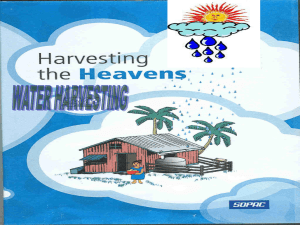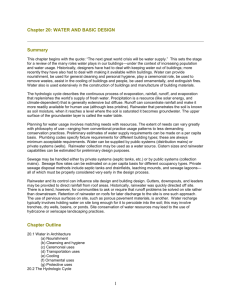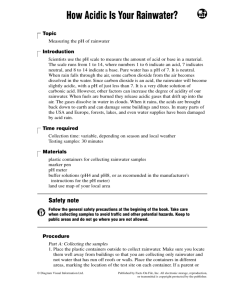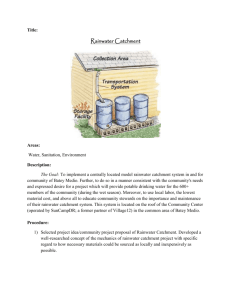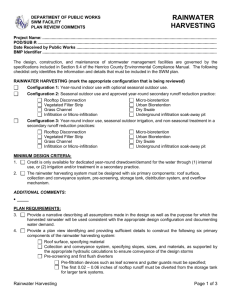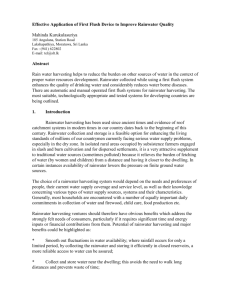CHAPTER 1 - KRYPTON2011-12
advertisement
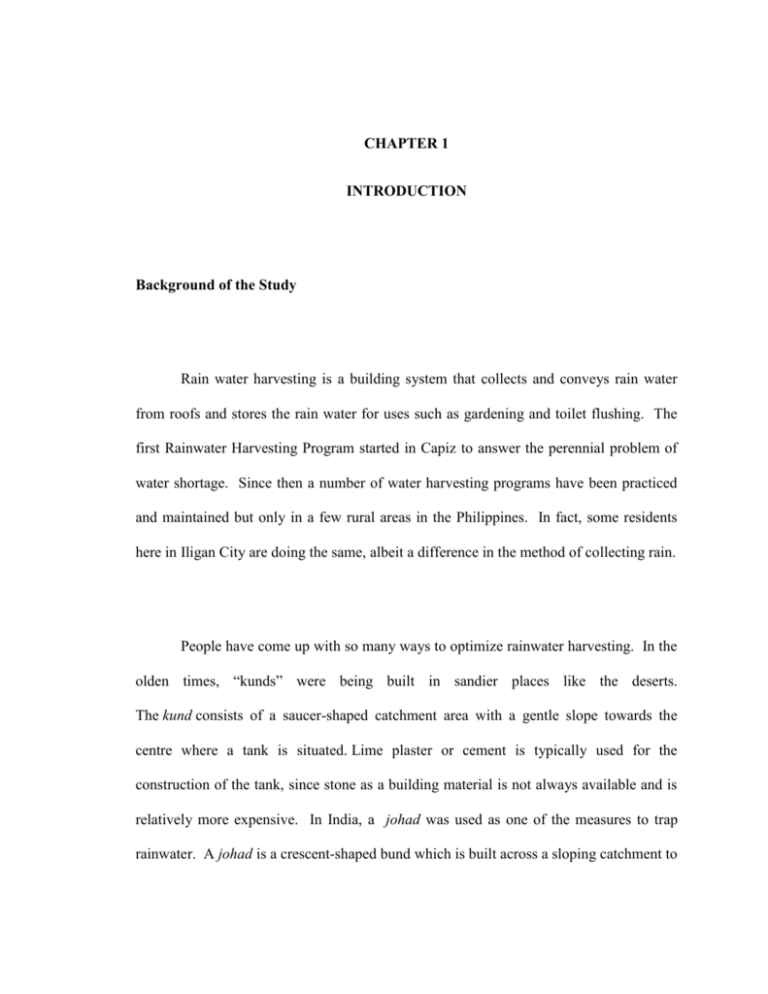
CHAPTER 1 INTRODUCTION Background of the Study Rain water harvesting is a building system that collects and conveys rain water from roofs and stores the rain water for uses such as gardening and toilet flushing. The first Rainwater Harvesting Program started in Capiz to answer the perennial problem of water shortage. Since then a number of water harvesting programs have been practiced and maintained but only in a few rural areas in the Philippines. In fact, some residents here in Iligan City are doing the same, albeit a difference in the method of collecting rain. People have come up with so many ways to optimize rainwater harvesting. In the olden times, “kunds” were being built in sandier places like the deserts. The kund consists of a saucer-shaped catchment area with a gentle slope towards the centre where a tank is situated. Lime plaster or cement is typically used for the construction of the tank, since stone as a building material is not always available and is relatively more expensive. In India, a johad was used as one of the measures to trap rainwater. A johad is a crescent-shaped bund which is built across a sloping catchment to capture the surface runoff. Water accumulating in the johad pass through the soil to augment the groundwater. This research study makes a certain innovation in a hope to optimize rainwater harvesting and help the residents of Iligan City by getting them to practice this measure of collecting rain water. Statement of the Problem Since Iligan City has not yet solved much of its water supply problem, due to the ongoing piping and water distribution projects, a lot of household chores such as watering of plants, doing laundry and even cleaning toilets and other areas of one’s home can be difficult to accomplish. Rainwater has been proved to be a good source in the augmentation of household water supply, but it is very difficult to harvest 100% rainfall from roofs due to unpredictable amount of rainfall, overflowing, breaking apart of gutters and clogging. This study is devised to address the problem of being able to filter debris and catch a substantial amount of rainwater from roofs that can be stored for household use without having to spend so much. Objectives This study aims to: 1. Maximize rainwater collection from catchment area by using a new device that will minimize water spillage from gutters. 2. Compare the actual amount of water collected from a specific catchment area and the computed amount of water collected using the formula used by the Oregon Building Codes Division Hypotheses of the Study 1. Increasing the size of gutters and downspout will solve the problem. 2. New filter design can solve clogging. Significance of the Study With the use of a filtering device, we prevent rainwater from clogging and overflowing in the gutter. Leaves and falling debris are also prevented from being trapped in the spout, thereby maximizing the entrapment of rainwater. Scope and Limitation of the Study The study is conducted at Brgy. San Miguel, Palao, Iligan City. Our prototype is a pension house. A rainwater collecting system was installed by using gutters that chanelled thru the downspouts then stored to an underground cistern. To optimize water collection, a box screen was placed on top of the downspout holes to prevent passage of leaves, twigs, and other large debris which can potentially obstruct the passage of water . Efficacy of the water collecting system is evaluated by comparing the formula used by the Oregon Building Codes Division (catchment area x rainfall precipitation x 0.46 gallons per square foot at catchment area per amount of rainfall). Definition of Terms Rainwater Water from natural precipitation that has not been contaminated by use Groundwater Water within the earth that supplies wells and springs Gutter A groove or channel for carrying off rainwater Downspout A vertical pipe used to drain rainwater from a roof Cistern The central storage component of the rainwater harvesting system Catchment area Roof Overflow Water that goes out of the brim of gutters Prototype Model



